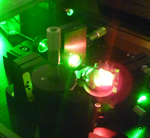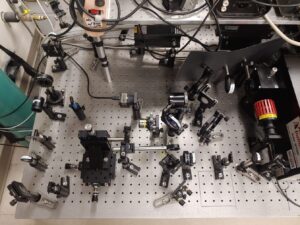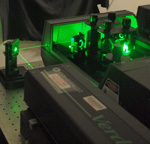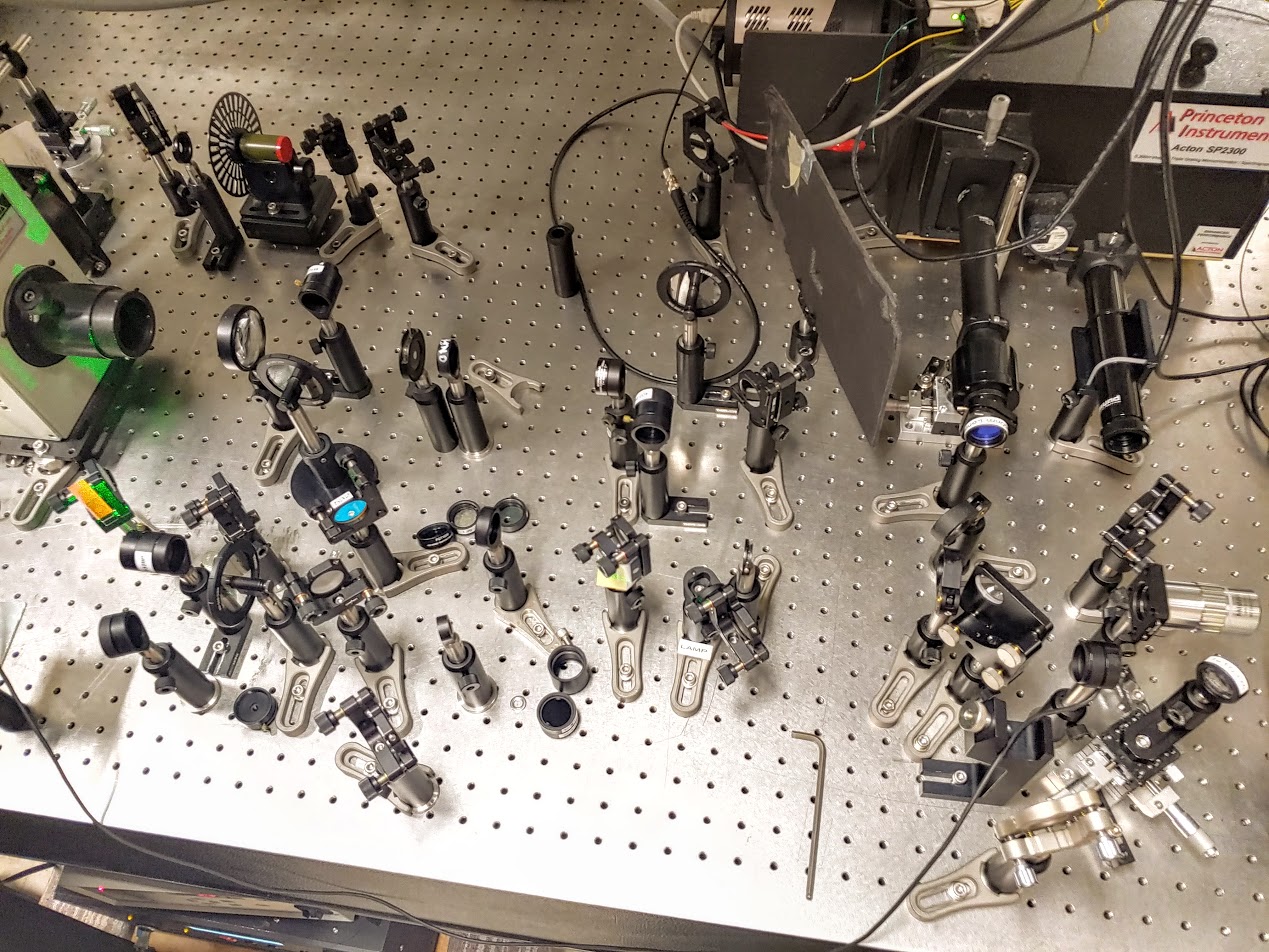Our Research
Superfluorescence in Hybrid Perovskites
We observed room temperature superfluorescence in a perovskite system. Superfluorescence is a macroscopic quantum phase transition, in which randomly oscillating electronic dipoles spontaneously synchronize and form a giant coherent ensemble of dipoles. Since quantum coherence is extremely fragile due to thermal processes, observation of room temperature superfluorescence suggests in these materials there is an intrinsic mechanism that protects quantum phase. Our studies show large polarons in these materials protect electronic coherence similar to vibration isolation in classical systems. In other words, there is a Quantum Analog of Vibration Isolation – QAVI. We are investigating the QAVI process and its implications for high temperature macroscopic quantum phase transitions.
Illustration of polaron-coupling preserving macroscopic quantum phase coherence
Read More:
[1] Biliroglu, M., Findik, G., Mendes, J. et al. Room-temperature superfluorescence in hybrid perovskites and its origins. Nat. Photon. 16, 324–329 (2022).
[2] Findik, G., Biliroglu, M., Seyitliyev, D. et al. High-temperature superfluorescence in methyl ammonium lead iodide. Nat. Photon. 15, 676–680 (2021).
Electron Hole Liquids and Plasma in 2D Semiconductors
Transitional Metal Dichalcogenides, or TMDCs, are atomically thin semiconductors that can be isolated in single monolayers, similar to graphene. These materials, due to greatly reduced screening from nearby charges, can exhibit exotic electronic properties such as room-temperature excitons, and even electron-hole liquid formation. Optical tunability of the band gap could allow these materials to be highly useful for the world of chip-scale electronics and photonics devices. However, with small size comes increased fragility, so experiments on these monolayers (often suspended in air) must be done with extreme precision and care. We use spectroscopic techniques including micro-PL imaging, Raman, time-resolved PL, and pump-probe microscopy to analyze the charge dyanamics of these samples, but also continue to explore the effects of strain on their charge properties.
Read More:
[1] A. W. Bataller, R. A. Younts, et al. Dense Electron–Hole Plasma Formation and Ultralong Charge Lifetime in Monolayer MoS2 via Material Tuning. Nano Letters 19 (2) (2019).
[2] R. L. Wilmington, H. Ardekani, et al. Fermi liquid theory sheds light on hot electron-hole liquid in 1L-MoS2. Phys. Rev. B 103, 075416 (2021).



Quantum Emitters in High Band Gap Semiconductors
Quantum photonics devices, including quantum computers, quantum repeaters, and quantum lidar systems all rely on single photon sources for basic operation. Our research focuses on investigation of single photon emitters from point defects in ultra high band gap semiconductors such as AlN.


